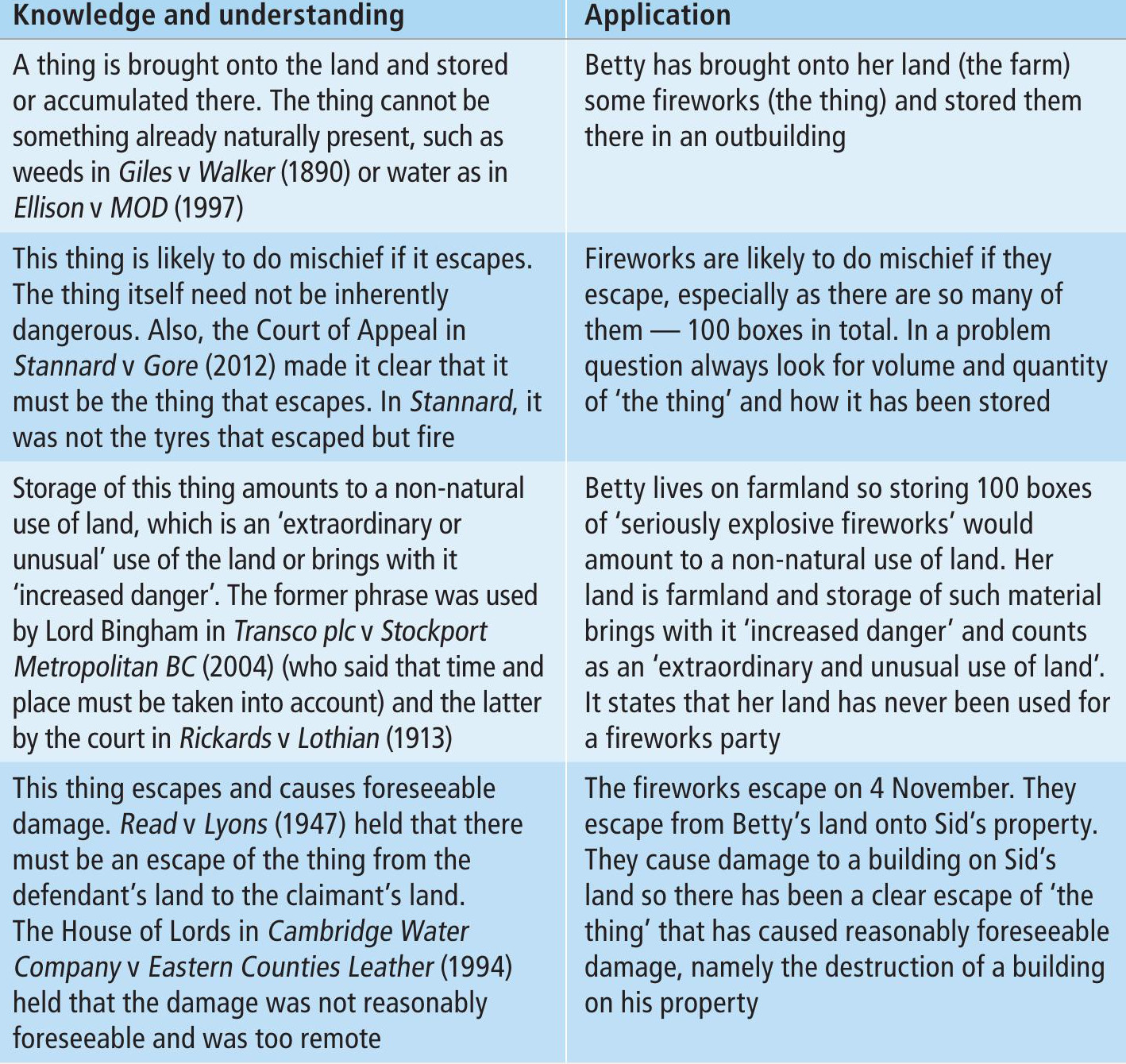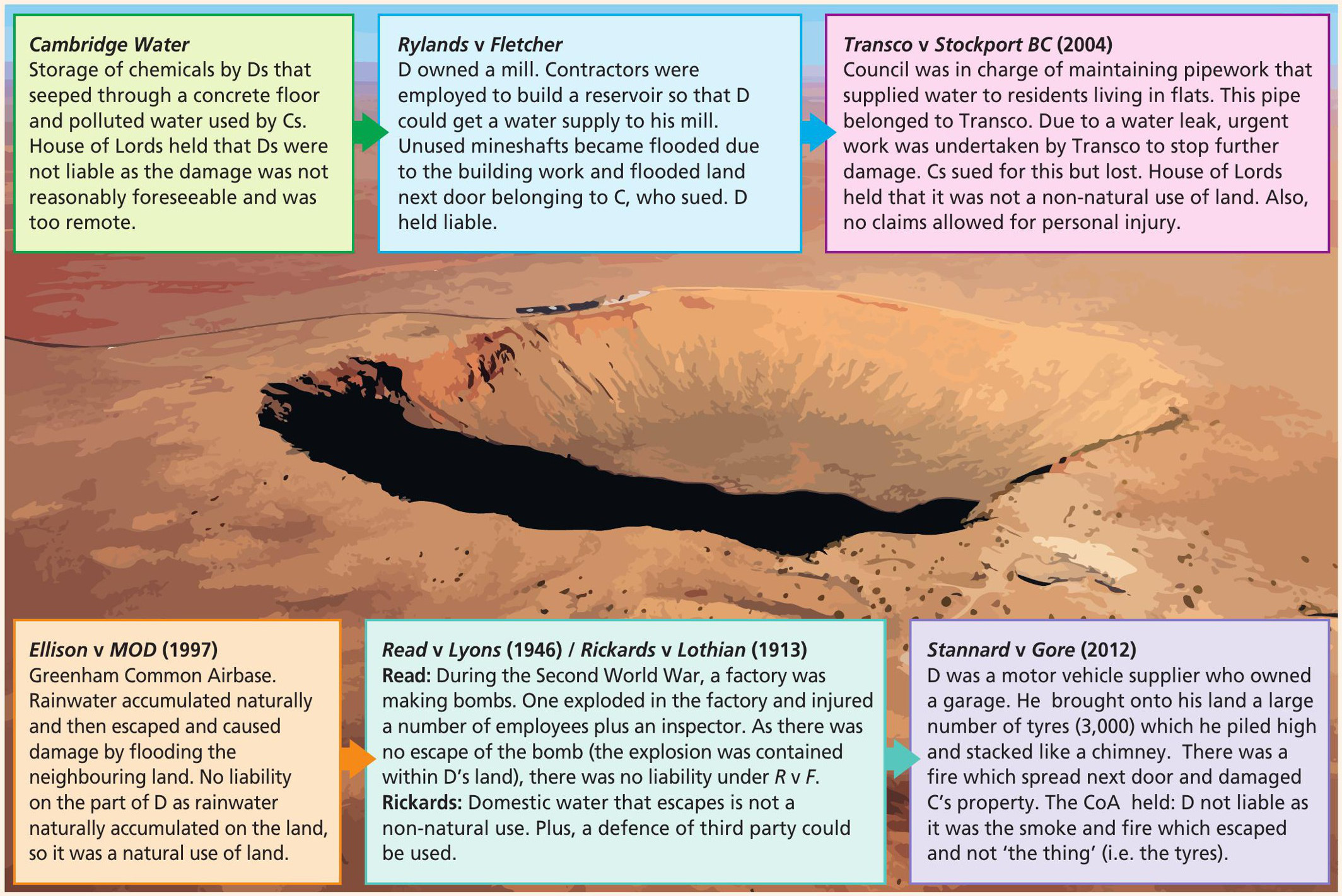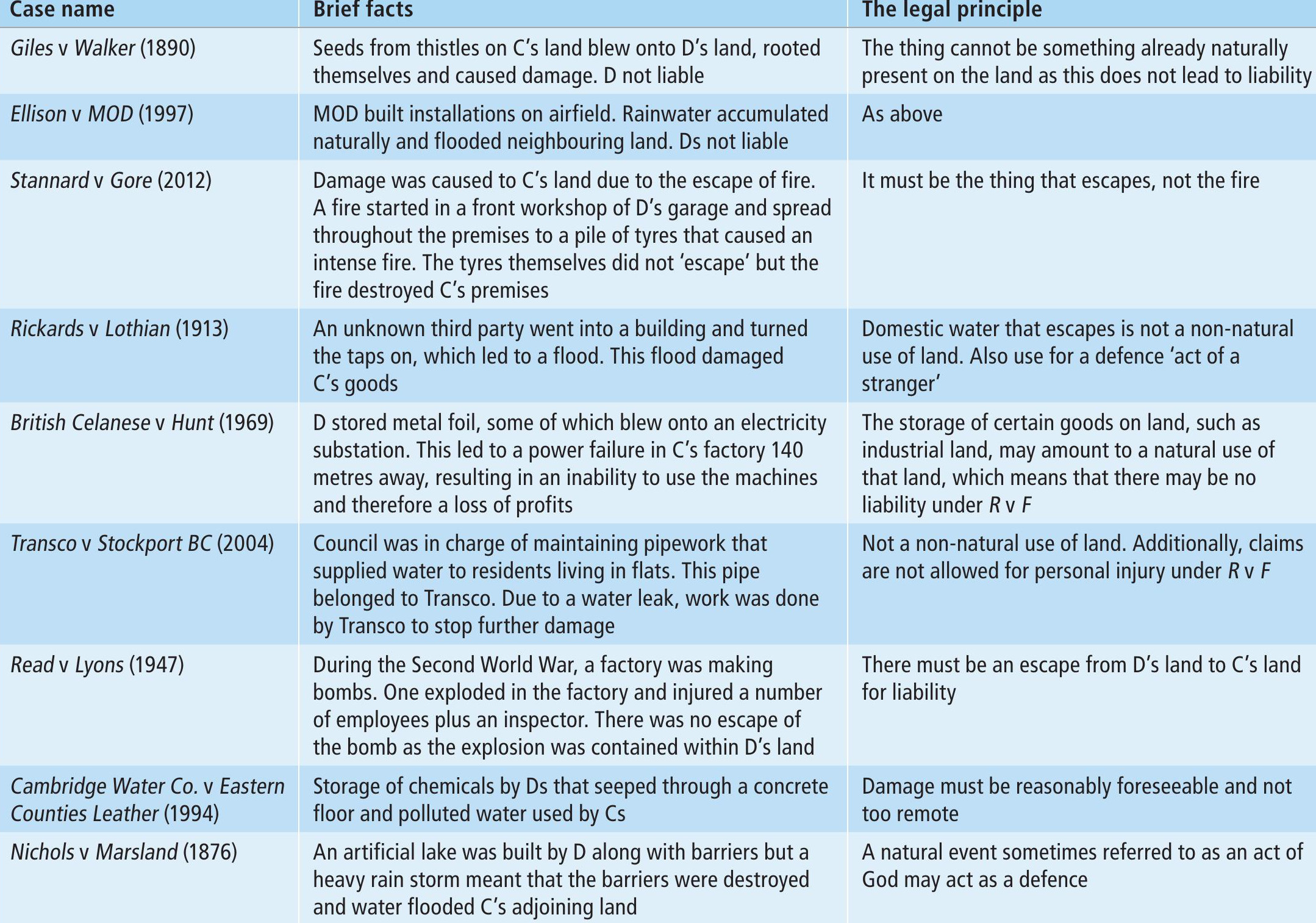EXAMINATION FOCUS
Revising cases in Rylands v Fletcher
Top tips and best practice for learning this popular examination topic in tort law
EXAM FOCUS
This ‘Examination focus’ is relevant to AQA Paper 2, OCR Component 2, Eduqas Components 2 and 3, and WJEC Unit 2.
We all know that studying tort law is heavily case-based. There are a host of cases on negligence, nuisance, occupiers’ liability, defences and remedies, to name but a few. Here, the focus is on ways to revise essential cases relating to the tort of Rylands v Fletcher (1868) — henceforth referred to as R v F. It is all very well reading the cases and understanding them, but how can students learn them for examination purposes? There are a few methods to think about.
Method one: visualisation
We know that R v F is a strict liability land-based tort, but do we know the steps that must be established for the tort as well as the most relevant cases? Visualising a situation involving a person physically committing the tort may help to learn it.

Example
It is 1 November and Betty visits a shop to buy 100 boxes of seriously explosive fireworks for the huge party she is going to have on her farm. She has never had a fireworks party on her property before. She buys the boxes and stores them in a farm outbuilding. On the night of 4 November there is a huge storm and lightning strikes the farm building. The boxes of fireworks cause a huge fire that leads to an explosion, which burns down a building in the neighbouring farm belonging to Sid.
By visualising the tort in action, we can extract the following elements about R v F (see Table 1).


Method two: flashcards
One good way to learn cases, particularly tort cases, is to extract those that are essential. This could be done by creating a system to learn three key cases as the essential cases. These cases could be added to postcards and colour-coded.
All negligence cases could go on yellow, nuisance on blue and R v F on green, for example. It is important to write the case at the top, have brief facts and focus on the principle of law, which is the principle students will need in order to answer questions — as follows:
Cambridge Water Company v Eastern Counties Leather (1994)
Facts: A tannery was owned by the defendants (Ds). They stored chemicals on their premises, which seeped through a concrete floor and from there into a water supply. Claimants (Cs) had to spend a lot of money on cleaning up the polluted water that resulted and they sued.
Court held: The House of Lords held that as the damage was not reasonably foreseeable and was too remote the Cs lost the case.



Method three: using mnemonics
A mnemonic is a good way to learn lists, especially when you have key cases. Sometimes with R v F, an explosion has occurred and a crater has been left behind because a mine has collapsed or pipes have burst causing damage. Whether you use visualisation or the acronym CRATERS — Cambridge Water, Rylands [and] Transco, Ellison, Read [or] Rickards, Stannard — it may help you learn the key cases for this tort. See Figure 1.
Method four: grid work
An alternative way to learn cases is to write down all the essential cases in a grid. Once again, these grids could be colour-coded. Focus less on what happened in the cases and more on the principle because it is the principle that needs to be applied in a problem question or perhaps evaluated in an essay question. Rather than writing the cases out alphabetically or chronologically, it is useful to write them out in the order of the definition of the tort. See Table 2 for a grid on R v F to show what this might look like.

And finally
There are several websites and online quizzes to help learn the law, such as www.quizlet.com and www.kahoot.com. The key to learning case law is little and often. Also, by adopting a case system and either using a grid style or using flashcards to test each other, learning will become more embedded.
Caroline Clarke Fleming is an experienced A-level law examiner and teacher of law at Brighton and Hove Sixth Form College.





